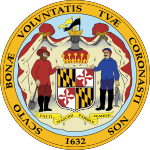
Presidential elections were held in the United States from November 2 to December 5, 1792. Incumbent President George Washington was elected to a second term by a unanimous vote in the electoral college, while John Adams was reelected as vice president. Washington was essentially unopposed, but Adams faced a competitive re-election against Governor George Clinton of New York.

The 2nd United States Congress, consisting of the United States Senate and the United States House of Representatives, met at Congress Hall in Philadelphia, Pennsylvania, from March 4, 1791, to March 4, 1793, during the third and fourth years of George Washington's presidency. The apportionment of seats in the House of Representatives was based on the provisions of Article I, Section 2, Clause 3 of the United States Constitution. Additional House seats were assigned to the two new states of Vermont and Kentucky. Both chambers had a Pro-Administration majority.
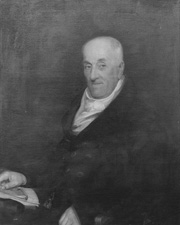
William Hindman was an American lawyer and statesman from Talbot County, Maryland. He represented Maryland in the Continental Congress, and in the federal Congress as both a Representative from the second and seventh districts, and as a U.S. Senator.
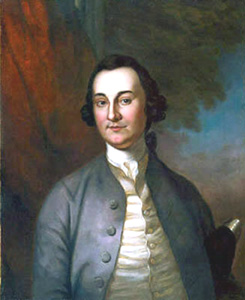
George Plater III was an American planter, lawyer, and statesman from Saint Mary's County, Maryland. He represented Maryland in the Continental Congress from 1778 to 1780, and briefly served as the sixth Governor of Maryland in 1791 and 1792.
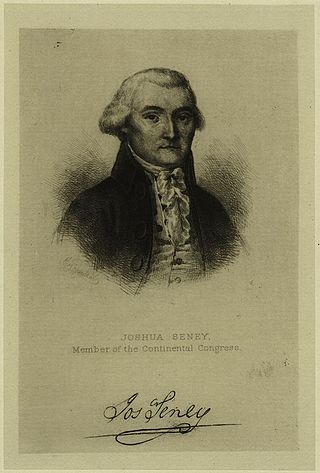
Joshua Seney was an American farmer and lawyer from Queen Anne's County, Maryland. He represented the state of Maryland in the Continental Congress, and the second district of Maryland in the House of Representatives.

The 1792–93 United States House of Representatives elections were held on various dates in various states between August 27, 1792, and September 6, 1793. Each state set its own date for its elections to the House of Representatives before the first session of the 3rd United States Congress convened on December 2, 1793. With the addition of the new state of Kentucky's representatives, and the congressional reapportionment based on the 1790 United States census, the size of the House increased to 105 seats.
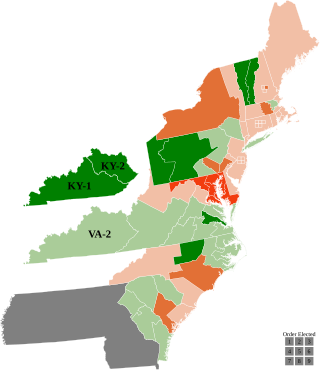
The 1790–91 United States House of Representatives elections were held on various dates in various states between April 27, 1790, and October 11, 1791. Each state set its own date for its elections to the House of Representatives before or after the first session of the 2nd United States Congress convened on October 24, 1791. This was the first midterm election cycle, which took place in the middle of President George Washington's first term. The size of the House increased to 67 seats after the new state of Vermont elected its first representatives.
George Dent was an American planter and politician from Maryland who served in the House of Representatives from 1793 to 1801.
Gabriel Christie was an American political leader from Perryman, Maryland.

Maryland's 8th congressional district is concentrated almost entirely in Montgomery County, with a small portion in Prince George's County. Adjacent to Washington, D.C., the 8th district takes in many of the city’s wealthiest inner-ring suburbs, including Bethesda, Chevy Chase, and Potomac. It also includes several more economically and racially diverse communities, the most populous of which are Rockville and Silver Spring.

Maryland's 3rd congressional district covers all of Howard county as well as parts of Anne Arundel and Carroll counties. The seat is currently represented by Sarah Elfreth, a Democrat.
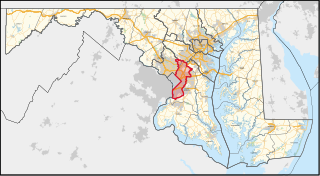
Maryland's 4th congressional district wraps around the eastern edge of Washington, D.C., taking in most of Prince George's County and a small portion of Montgomery County. It is home to several racially diverse middle-class suburbs, including College Park, Fort Washington, Greenbelt, and Laurel. With a median household income of $86,941, it is the wealthiest black-majority district in the United States.

Maryland's 5th congressional district comprises all of Charles, St. Mary's, and Calvert counties, as well as portions of Prince George's and Anne Arundel counties. The district is currently represented by Democrat Steny Hoyer, who from 2007 to 2011 and from 2019 to 2023 was House Majority Leader.
Thomas Holdsworth Blake was an American politician who served as a United States Representative from Indiana from 1827 to 1829.
In the United States, state governments are institutional units exercising functions of government at a level below that of the federal government. Each U.S. state's government holds legislative, executive, and judicial authority over a defined geographic territory. The United States comprises 50 states: 9 of the Thirteen Colonies that were already part of the United States at the time the Constitution took effect in 1789, 4 that ratified the Constitution after its commencement, plus 37 that have been admitted since by Congress as authorized under Article IV, Section 3 of the Constitution.

The 1789 United States House of Representatives elections in Maryland were held from December 15, 1788, to January 10, 1789, to elect the six U.S. representatives from the state of Maryland, one from each of the state's six congressional districts. The elections coincided with the 1788–89 U.S. presidential election , as well as other elections to the House of Representatives, elections to the United States Senate and various state and local elections.

A special election was held in Maryland's 2nd congressional district on January 7, 1793, to fill a vacancy left by the resignation of Joshua Seney (A) on December 6, 1792, to accept a judicial appointment.

The 1956 United States presidential election in Maryland took place on November 6, 1956, as part of the 1956 United States presidential election. State voters chose nine representatives, or electors, to the Electoral College, who voted for president and vice president.

The 1792 United States presidential election in Maryland took place on an unknown date in 1792, as part of the 1792 presidential election. Voters chose eight representatives, or electors to the Electoral College, who voted for President and Vice President.
